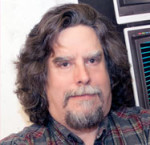CMYK printing is a designer's dream as it creates exceptional prints that can be vibrant, has depth, and provides accurate color matches.
Believe it or not, the combination of these four mismatched colors can create every tone and shade in the design rainbow. From dull grays to luminous greens, CMYK printing makes for exceptional printing works.
If you've ever worked with a commercial printer, at some point, you've been asked to submit your design files in CMYK or to convert your file to CMYK. It is a standard practice that most print companies require and almost all designers adhere to.
The term CMYK has been used in the print industry for decades, but do you fully understand what it stands for? We all know that C is for Cyan, M is for Magenta, and Y is for Yellow, but have you ever wonder what the 'K' stands for? In this blog post, we unpack what 'K' is, where it comes from and why it is not referred to as B.
CMYK for printing
Before we get into the nitty-gritty of understanding the mysterious 'K,' let's take a look at the purpose and impact of CMYK printing. Using Cyan, Magenta, Yellow, and Black, the CMYK printing process uses ink dots to create a final print that accurately matches your design. No matter the brightness, dullness, or shade of color, combining these four colors can create the exact color matches you've used in your final design.
Unlike RGB, you will never go wrong with CMYK printing when it comes to perfectly matching colors -- ensuring that all designers have happy clients at the of the day.
Whether you're a novice designer or someone just wanting to get a few flyers printed, 'K' is a common term that has been used in the print industry for a long time, and funnily enough, it is used to avoid confusion. But no one really knows what it stands for. Let's set the record straight once and for all and find out what it stands for.
What is CMYK?
CMYK is a colour model used in colour printing. It stands for Cyan, Magenta, Yellow and Key (K). These colours are combined to create a range of colours as can be seen on the CMYK colour wheel. They are also known as process colours or four-colour process since four different plates are used (one plate each for cyan, magenta, yellow and key).
CMYK uses subtractive colors when printing. This means the final print begins with a background that is already white (like a sheet of paper). Color is then added to the white background to achieve various light and dark shades. Lighter shades are created by using cyan, magenta, and yellow.
What does the 'K' stand for?
As confusing as it may seem, 'K' stands for Key, Key Color, or Key Plate, which actually refers to the color Black.
Key or key plate is an old-school printing term that refers to the printing plate with the most detail. That plate was commonly used for the color black. The plate was used to line up the color registration of the printing plates for the other colors; therefore, it was called the key plate. In modern printing, it refers to the color black.
The lighter color range can not be matched by RGB printing as its three primary colors are too dark. Adding black to the CMYK mix allows for the perfect spectrum of color as it can create the rich, deep, and dark tones a designer might desire.
As confusing as it may seem, 'K' stands for Key, Key Color, or Key Plate, which actually refers to the color Black.
Why 'K' And Not 'B'?
Now that you know what the 'K' stands for, you may be asking yourself why it is not CMYB? It would make more sense to replace the 'K' for Key with a 'B' for Black, right?
The in-depth printing industry history makes it a lot less straightforward than that. The reason 'K' is used instead of 'B' is because it is too ambiguous. 'B' could potentially stand for black, blue, beige, or even brown. In the most common case, 'B' would refer to Blue and given its various shades, and it is often used for one-color print work, referring to 'B' when printing could lead to some very annoyed clients. You might end up with a blue and white design instead of a black and white one.
To prevent confusion and unhappy customers, those in the print industry refers to Black as Key (K)! When process color printing came along, it was only correct for printers to use C, M, Y, and K. It's that simple.
If you want to learn more about printing techniques, graphic design, and color theory, check out the Jukebox blog.









